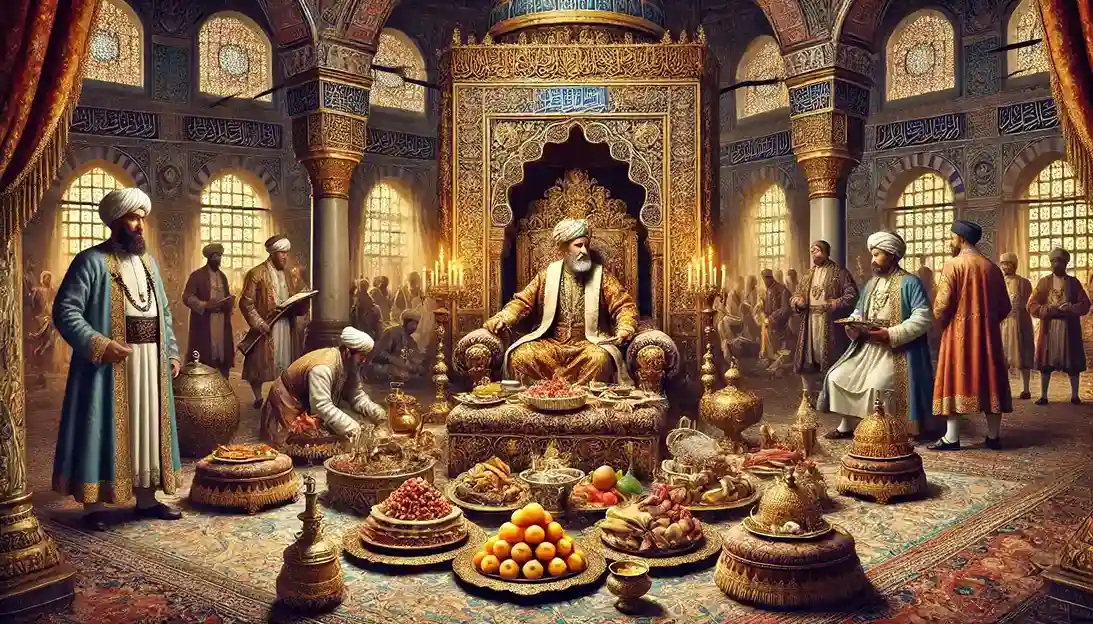Famous Foods of Ottoman Empire’s Era. All history about foods and dishes which are dined by Sultans Of Ottoman Empire.
Hi Guys In This Article I Well Show With You History Of Ottoman Empires Foods. Between the 14th and 20th centuries, the Ottoman Empire ruled vast swathes of Western Asia, Southeast Europe, and North Africa. Ottoman sultans lived lives of luxury and extravagance, and they loved to eat. Food was a big deal to the rulers of the Ottoman Empire. Sultans stocked their kitchens with exotic spices and ingredients imported from all across their massive empire, as well as from trading partners like China and Persia. Today, we’re going to take a look at how a sultan in the Ottoman Empiredined.
So let’s talk turkey. Before we get to the specifics, you should know that the Ottoman sultans weren’t big on sharing their culinary secrets with the rest of the world. For this reason,imperial cooks were forbidden from writing down their recipes. Some of these dishes, like baklava and Turkish coffee, are still popular mainstays of Turkish cuisine. But some were lost,and others have been difficult to reconstruct. Despite the sultan’s best efforts at secrecy, some of their favorite foods and beverages are now commonly known. Many could even still be found on the streets of Istanbul today, over a century after the fall of the empire. Imagine being rich enough to have your own confectionery kitchen that would make treats for you on command. The Ottoman sultans had such Kitchens, and they specialized in making jams, juices, syrups, and sweets. The most famous and luxurious of which was baklava. Baklava dates back thousands of years, all the way to ancient Assyria, but it was the 15th century Ottomans who perfected the recipe. The oldest known references to the dessert came from notebooks written in the kitchen of Topkapi Palace in 1473.
Baklava :
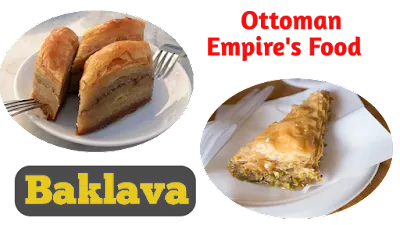
Over the subsequent years, baklava would evolve from a relatively simple pastry to an elaborate and time consuming dessert made from paper thin pastry layered with honey and nuts. It requires great skill to make, which met the dish was expensive. That being the case, baklava was considered a wealthy person’s luxury well in to the 19th century. It was so ingrained that even today Turks still use the expression”I’m not rich enough to eat baklava every day.
Doner Kebab :
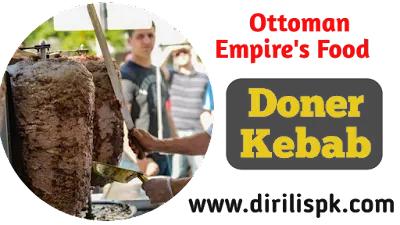
” Kebab goes way back. Ancient legends tell of brave Turkish warriors who would eat grilled meat off the blade of their sabers. Sultans have been known to enjoy it, including Sultan Abdul aziz, who apparently ordered takeout kebab from a well-known kebab house near his country lodge during the 19th century. Huh, and you thought drive-thru was a modern invention. Today, the most famous Turkish kebab is doner kebab, which is also known as doner kebab. Likely developed sometime in the 19th century, this type of kebab is grilled meat shaved off a vertical rotisserie. The Ottomans would have eaten the meat like Arab shawarma or a Greek euro which,incidentally, are both derived from doner kebab.
Turkish Coffee :
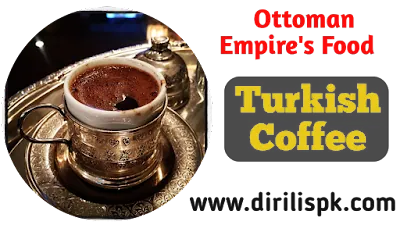
The Turkish relationship with coffee has shifted quite a bit over the years. A governor from Yemen introduced the drink to Sultan Suleiman in the 16th century. He was quite fond of it. And the thick, bitter beverage became wildly popular in Istanbul and all across the empire. However, in the 17th century Sultan Murad IV declared coffee an indecent drink. The beverage was outlawed, and anyone found drinking it would face beheading, which still might be just about the only thing that could get coffee drinkers to reconsider their habit. It’s tough to be an addict. Turkish coffee is made from ground beans boiled in a brass pot. It packs a dense punch and has a distinct consistency and taste that the country is quite proud of. One cafe in Istanbul even brags that its coffee is so thick even a water Buffalo wouldn’t sink in it. Well, that sounds too thick.
Tea :
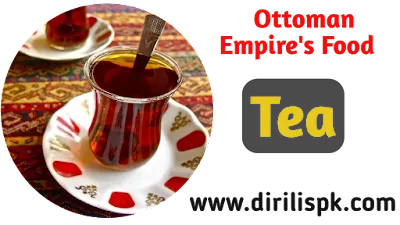
While there is evidence that Ottomans drank tea as early as 400 BC, the beverage didn’t become common in Turkey until the 1900s. They originally learned of tea from China and named it Chai,spelled C-A-Y, After the Chinese word for tea. The late 19th century Ottomans tried to grow their own tea, but they picked an area of the country that wasn’t well suited for it. So the crop didn’t take off. However, by the early 20th century Turkey was using imported seeds to create nurseries that thrived. Today, the country produces hundreds of thousands of tons of tea, which is theirsecond most consumed drink after water. The Ottomans made their teausing a multilayered pot called a samovar to boil water. This would create a highly concentrated drink that could be diluted to taste by adding additional water. Modern Turks tend to take their tea with cubes of beet sugar, which sweetens the intense flavor. They must like it because Turkey is the sixth largest producer of tea in the world today.
Sherbat :

To most modern people,sherbet is a frozen desert made by adding fruit juice to milk, cream, or gelatin. But to the Ottomans, it was a sweet refreshing drink. Made from mixing crushed fruit with various flowers and herbs, sherbet could be enjoyed both before and during meals. Ottoman sherbet could be made a number of ways, but at least one recipe recommended combining iced spring water with a syrup made from pear, quince, peach, apple, and apricot. In the 17th century,England started making their own from sherbet powders imported from the Ottoman Empire. Because Ottomans might mix the surf with water, ice, or even snow, the word “sherbe
Borek :
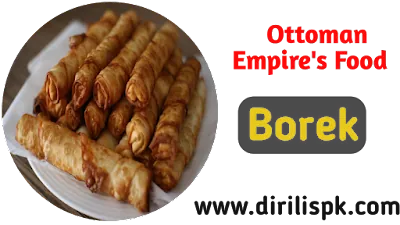
” Historians disagree on whether borek was originally created in Turkey or somewhere else in the eastern Mediterranean. Whatever the case, it was a favorite of the Ottoman sultans since the days of Mehmed The Conqueror in the 15th century. A flaky, savory pastry which comes in different shapes,like squares, triangles, and crescents and might be filled with ingredients like cheese, vegetables,or lamb, borek still remains popular today. However, the dish dishes changed quite a bit over the years. The borek Mehmed enjoyed was likely stuffed with chicken. Later, sultans would have eaten borek stuffed with rare, imported ingredients like chestnuts, dried apricots, dates, and minced meat, as was the case during the diplomatic banquet in 1649.
Salep :
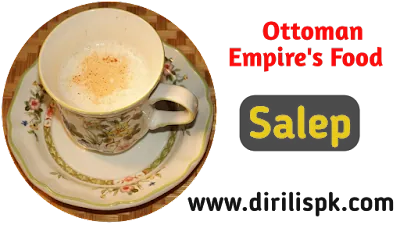
Salep has a warm milky drink made from ground orchids. The main ingredient in the drink was salep flour, which was made by grinding up the dried roots of wild Anatolian Mountain orchids. This flower, which was believed to have the properties of an aphrodisiac, would then be mixed with rosewater, milk, and sugar to create a sweet delicious treat which the Ottomans absolutely loved. The drink remains so incredibly popular in Turkey today the nation actually sawan appreciable decline in the population of wild orchids and had to pass laws forbidding its export.
Pilaf :
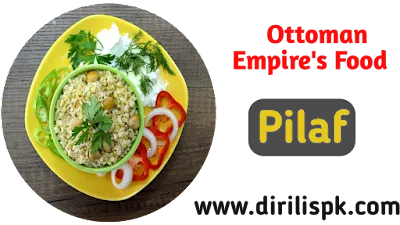
Pilaf is a rice dish containing vegetables, meats, and spices that’s cooked in a broth. Turkish pilaf, for example, was frequently cooked with mutton stock. While there are many varieties of Turkish pilaf, they are all cooked so that the rice ideally doesn’t stick at all and could potentially fall from the spoon one grain at a time. Pilaf’s history in Turkey can be traced back to at least 1404 when the Turko-Mongolian Emperor, Timur, served it at a banquet. By the 16th century,rice pilaf with not only a staple of Ottoman cuisine but was also wildly popular with their frequent rivals in the Persian empire. A 17th century Ottoman traveler in the Persian city of Tabriz recorded 40 different kinds of pilaf. The city had been occupied by the Ottomans several times in the past.
Dolma & Sarma :
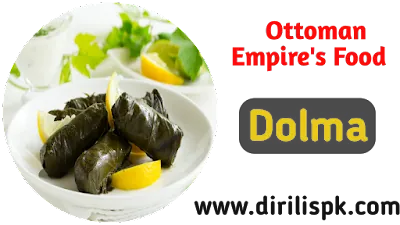
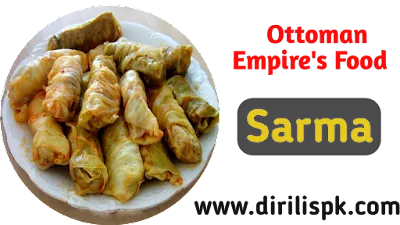
Stuffed dishes were especially popular with the Ottomans. In fact, an entire subset of Ottoman cooking focused on dolma, which are stuffed foods, and sarma, whichare wrapped foods. The love affair began way back when the Turks conquered Constantinople in 1453, and Sultan Mehmed developed a taste for vegetables stuffed with meat. While the sultan was the first to take the dish, it quickly became popular. Vegetables commonly used to make dolma include eggplants, onions,tomatoes, zucchini, and peppers. Eventually, the Ottomans also learned techniques for wrapping vegetables,rice, and spices together in grape leaves. This dish was called sarma,after its wrapping process.
Bread :
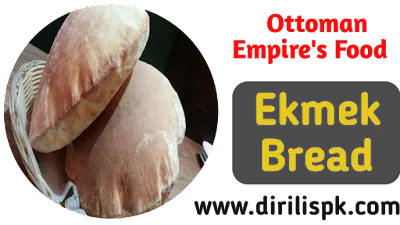
Bread was a staple of Ottoman cuisine, and the Imperial Palace was known to have its own bread ovens. Ottomans baked at least 46 different types of bread, including a popular variety known as haz ekmek, which was soft, white, and sprinkled with seeds. Recipes show that Ottoman bakers often added fennel juice to their dough, and Mehmed The Conqueror was known to eat bread with melted animal fat. During the 15th century, Ottomans would dip bread into a chickpea spread flavored with currant, cinnamon, and pine nuts. Th is spread is believed to be an ancestor of hummus.
Boza :
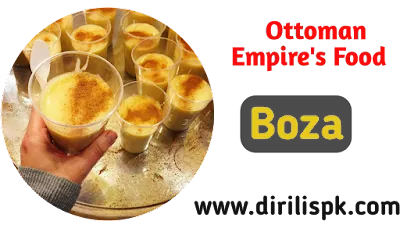
Boza is made by boiling millet in water, then sieving it,and adding sugar. It’s not an Ottoman drink and, in fact, predates them by centuries. However, the Ottoman Empire did spread the drink to new places and drastically increased its popularity. The drink had a consistency like pudding and contained alcohol due to the fermentation of the millet. It was because of this alcohol content that Sultan Mehmed IV banned boza during the 17th century– a rule that wasn’t terribly popular or always respected. By the 19th century, a non-alcoholic version of boza became popular, and Turks still drink it today, especially in winter.
Ayran :
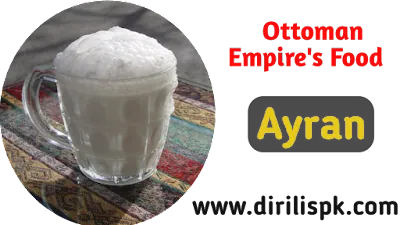
Ayran is a salty yogurt drink that long predates the Ottoman Empire. The drink, which was created by mixing yogurt with water, dates back thousands of years and was spread around by the Ottoman Empire as they conquered the Near East. Sometimes consider the national beverage of Turkey, Ayran is also popular in Lebanon, Iran, and Greece. Combining the tartness of yogurt with salt, ayran is typically seen as a refreshing summertime drink and is still so popular in Turkey today that you can buy it at a Turkish McDonald’s.
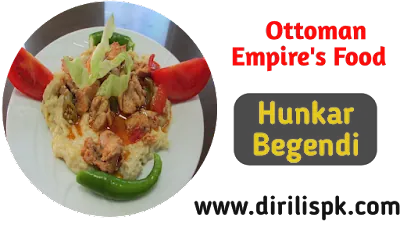
Sultan’s delight is another name for “hunkar begendi,” which translates to”the ruler was pleased.” It’s made from stewed meat on top of eggplant paste and, according to one source, was introduced to Abdul aziz, the 32nd Ottoman sultan, by an African cook in the mid-19th century. However, not everyone agrees. Other sources say the dish was a specialty of Catholic cooks, who were likely French or Italian and worked at the palace. Whatever the case,the dish’s name implies that, regardless of who came up with the recipe, the sultan liked it.
Another favorite of the Ottoman sultans was roasted quince stuffed with lamb. The dish, which combines the crispiness of roasted fruit with a stuffing made from beef,lamb, pine nuts, and currants, is very hard to find today. This is at least partially because quince is fairly uncommon and difficult to locate. Even the owner of an Istanbul restaurant that specializes in Ottoman foods reported having to bribe fruit vendors in saving him quinces that were large enough and smooth enough for the dish.
So what do you think? How does this cuisine sound to you, and how would you fare as a sultan?
Hi Friends, How are You?
If you like this article then please like it, share it with your family and friends. thanks
